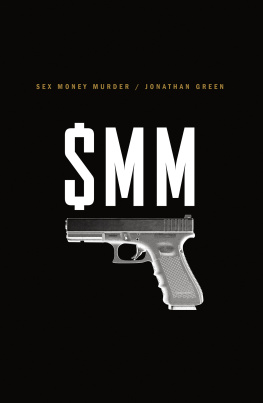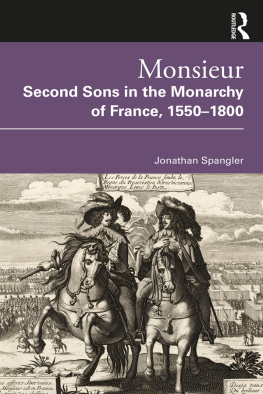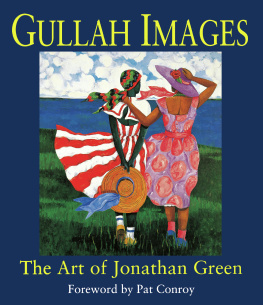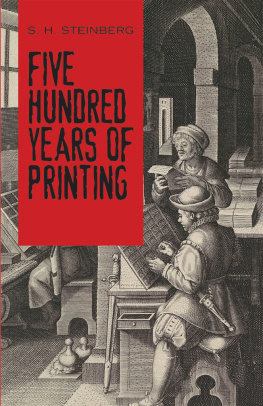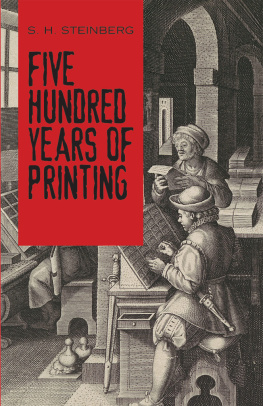Jonathan Green - Printing and Prophecy: Prognostication and Media Change, 1450-1550
Here you can read online Jonathan Green - Printing and Prophecy: Prognostication and Media Change, 1450-1550 full text of the book (entire story) in english for free. Download pdf and epub, get meaning, cover and reviews about this ebook. year: 2018, publisher: The University of Michigan Press, genre: Religion. Description of the work, (preface) as well as reviews are available. Best literature library LitArk.com created for fans of good reading and offers a wide selection of genres:
Romance novel
Science fiction
Adventure
Detective
Science
History
Home and family
Prose
Art
Politics
Computer
Non-fiction
Religion
Business
Children
Humor
Choose a favorite category and find really read worthwhile books. Enjoy immersion in the world of imagination, feel the emotions of the characters or learn something new for yourself, make an fascinating discovery.
- Book:Printing and Prophecy: Prognostication and Media Change, 1450-1550
- Author:
- Publisher:The University of Michigan Press
- Genre:
- Year:2018
- Rating:3 / 5
- Favourites:Add to favourites
- Your mark:
- 60
- 1
- 2
- 3
- 4
- 5
Printing and Prophecy: Prognostication and Media Change, 1450-1550: summary, description and annotation
We offer to read an annotation, description, summary or preface (depends on what the author of the book "Printing and Prophecy: Prognostication and Media Change, 1450-1550" wrote himself). If you haven't found the necessary information about the book — write in the comments, we will try to find it.
Printing and Prophecy: Prognostication and Media Change, 1450-1550 — read online for free the complete book (whole text) full work
Below is the text of the book, divided by pages. System saving the place of the last page read, allows you to conveniently read the book "Printing and Prophecy: Prognostication and Media Change, 1450-1550" online for free, without having to search again every time where you left off. Put a bookmark, and you can go to the page where you finished reading at any time.
Font size:
Interval:
Bookmark:
 Page i
Page i Cultures of Knowledge in the Early Modern World
Edited by Ann Blair, Anthony Grafton, and Jacob Soll
The series Cultures of Knowledge in the Early Modern World examines the intersection of encyclopedic, natural, historical, and literary knowledge in the early modern world, incorporating both theory (philosophies of knowledge and authority) and practice (collection, observation, information handling, travel, experiment, and their social and political contexts). Interdisciplinary in nature, the goal of the series is to promote works that illustrate international and inter-religious intellectual exchange and the intersections of different fields and traditions of knowledge.
History, Medicine, and the Traditions of Renaissance Learning
Nancy G. Siraisi
The Information Master: Jean-Baptiste Colberts Secret State Intelligence System
Jacob Soll
Printing and Prophecy: Prognostication and Media Change 14501550
Jonathan Green
Jonathan Green
The University of Michigan Press
Ann Arbor
Copyright Jonathan Green 2012
All rights reserved
This book may not be reproduced, in whole or in part, including illustrations, in any form (beyond that copying permitted by Sections 107 and 108 of the U.S. Copyright Law and except by reviewers for the public press), without written permission from the publisher.
Published in the United States of America by
The University of Michigan Press
Manufactured in the United States of America
 Printed on acid-free paper
Printed on acid-free paper
2015 2014 2013 2012 4 3 2 1
A CIP catalog record for this book is available from the British Library.
Library of Congress Cataloging-in-Publication Data
Green, Jonathan.
Printing and prophecy : prognostication and media change, 14501550 / Jonathan Green.
p. cm. (Cultures of knowledge in the early modern world)
Includes bibliographical references (p. ) and index.
ISBN 978-0-472-11783-3 (cloth : alk. paper) ISBN 978-0-472-02758-3 (e-book)
1. ProphecyChristianityHistory. 2. Predictive astrologyEurope, German-speakingHistory. 3. BooksEurope, German-speakingHistory14501600. 1. Title.
BR115.P8G74 2011
261.5'1309409024dc22 2011014827
Page vQenai meinai jah barnam meinaim
Page vi Page viiThis book reflects the combined influence of scholarly instincts that I acquired early in my academic training. Within a few weeks of starting my first graduate seminars, I stumbled into a paper topic that grew into a masters thesis and later metamorphosed into an article: Hildegard of Bingens Lingua ignota, the glossary of a revealed language that stands out both for its linguistic peculiarity and for its prophetic claims. The key to understanding the glossary, it seemed to me, was to consider what significance such a curious text could have held for Hildegard and what effect it could have had on her readers. The summer after I completed my thesis, I was set to the task of investigating the fifteenth-century printed volumes in the Rare Book Room of the University of Illinois Library, to see if perhaps the bindings had been constructed from scraps of older manuscripts. Of course, they were: medieval paper was tough stuff, parchment is even more durable, and both were too expensive to discard just because whatever text was written on them was no longer needed. From the fragmentary manuscripts spanning six centuries that I found, I learned that medieval literacy was vastly more concerned with devotional, utilitarian, and educational textsalmost always in Latinthan with the landmarks of vernacular literature I was reading in my seminars. I learned firsthand that texts are stubbornly physical and that one can fill imagined libraries with books that have been reconstructed from just a few scraps. The following summer found me preparing for dissertation research on the Nuremberg Chronicle, in which I Page viii tried to make sense of the wanton individuality of marginal commentary left by readers who seemed to have had little regard for the carefully printed text and illustrations to which they were supposed to respond. In this project, I have attempted to study printed prophetic texts in the context of their time and place, at the intersection of culture and commerce, where authors, artists, and audience struggled for control of meaning.
In my research, I tried to build my argument as much as possible upward from the foundation of early printed books that I could see and hold in person and to make fifteenth- and sixteenth-century evidence for what was printed and how books were treated the standard against which propositions were measured. Of course, my research also builds on over 150 years of articles, books, and dissertations. Where I signal disagreement with them, I do so because they are serious works, worth considering and worthy of disagreement. My research has benefited a great deal from conversations with many American and German scholars, including a presentation of my initial research direction in 2005 in Berlin (which subsequently appeared as Bilder des fiktiven Lesers als Imaginationslenkung in Lichtenbergers Pronosticatio, in Imagination und Deixis: Studien zur Wahrnehmung im Mittelalter, ed. Kathryn Starkey and Horst Wenzel [Stuttgart: Hirzel, 2007], 17790).
As the roots of this project reach deep, many people and institutions have generously provided their guidance, resources, and expertise along the way. My thanks belong first to the Alexander von Humboldt Foundation, whose generous support made this research project possible, and to Prof. Dr. Ursula Rautenberg and the faculty for Buchwissenschaft at the Universitt Erlangen for providing an institutional home (in every sense) while I conducted research. Dr. Oliver Duntze contributed many helpful insights, and Prof. Dr. Christoph Blsi kindly shared half his office, two enjoyable seminars, and much good conversation. I am grateful to the libraries that permitted me to examine many works from their collections, including the Staats- und Stadtbibliothek Augsburg, Staatsbibliothek Bamberg, Landesbibliothek Coburg, Universittsbibliothek Eichsttt, Universittsbibliothek Erlangen, Universittsbibliothek Wrzburg, Ratsschulbibliothek Zwickau, Bayerische Staatsbibliothek Mnchen, Stadtbibliothek Nrnberg, and the library of the Germanisches Nationalmuseum Nrnberg. Dr. Stephen Bay provided valuable assistance with some tricky bits of Latin (the mistakes with the mundane parts are, of course, my own) as well as use of his office when it was most needed. I owe particular thanks to Dr. Aaron E. Wright for Page ix his decisive influence in launching my research, to Dr. Marianne Kalinke for keeping it afloat, and to Dr. Thomas Baginski and his colleagues at the College of Charleston for providing a friendly harbor where the specific course for this research project was mapped out.
I am deeply grateful to many other people who have contributed in essential ways to the success of my research, including Dr. Ralf Grnke and his wife, Emily Grnke, and countless numbers of their friends and relatives for making our stay in Germany an exceedingly happy, productive, and educational time. I owe my parents, Thayne and Verlene Green, special thanks for their unwavering support. I am particularly indebted to my wife, Rose, for her intolerance toward bad writing, to my children for their cheerful mobility, and to all my family for their companionship along the way.
Next pageFont size:
Interval:
Bookmark:
Similar books «Printing and Prophecy: Prognostication and Media Change, 1450-1550»
Look at similar books to Printing and Prophecy: Prognostication and Media Change, 1450-1550. We have selected literature similar in name and meaning in the hope of providing readers with more options to find new, interesting, not yet read works.
Discussion, reviews of the book Printing and Prophecy: Prognostication and Media Change, 1450-1550 and just readers' own opinions. Leave your comments, write what you think about the work, its meaning or the main characters. Specify what exactly you liked and what you didn't like, and why you think so.







